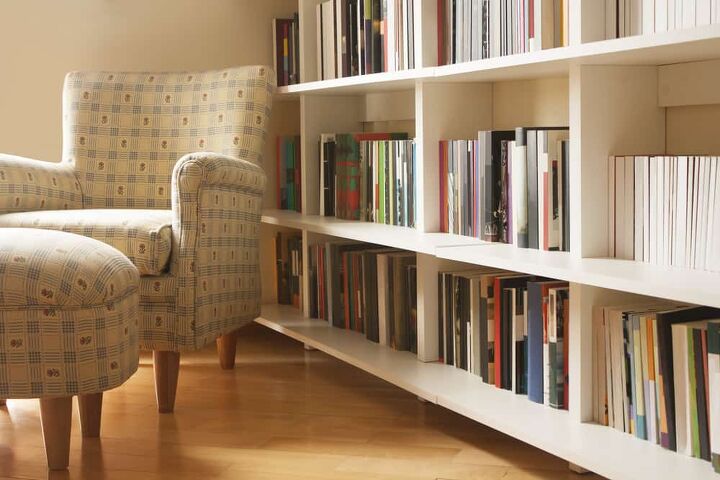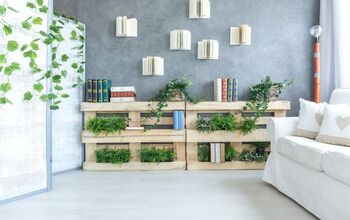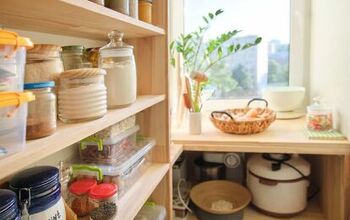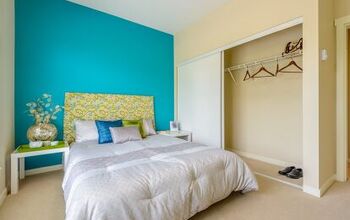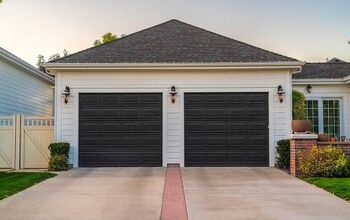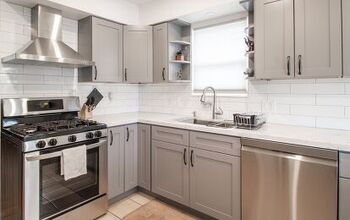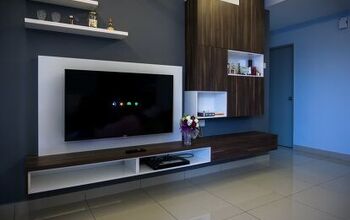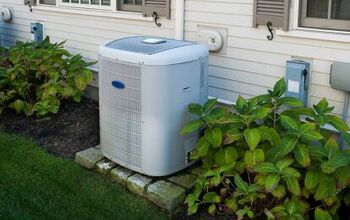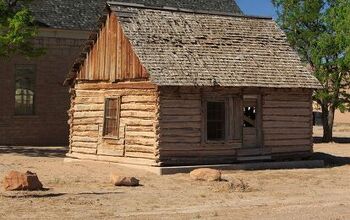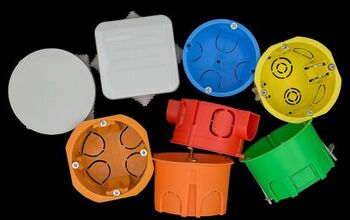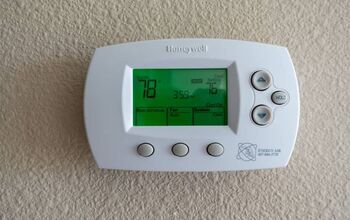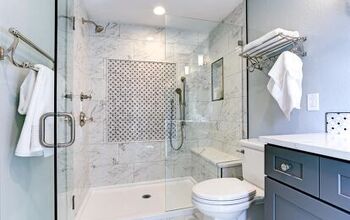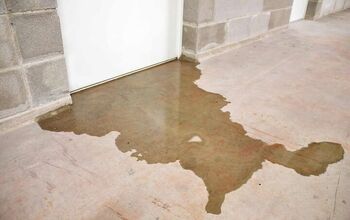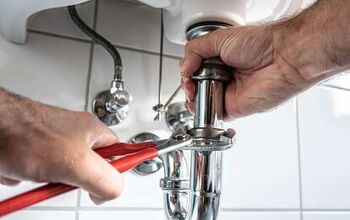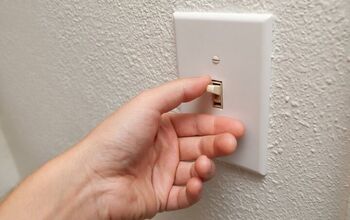Standard Bookshelf Dimensions (With Drawings)

When it comes to living a calm and productive life, your home plays a significant role in day-to-day living. An organized home leads to more time spent on things you enjoy and choosing the right furniture helps.
A bookshelf not only helps add lots of extra storage to your space, but it’s also versatile. There are so many different styles, all ranging in size and shape from small to massive built-ins. Plus, you can use bookshelves for more than just books, displaying art, accessories, or even creating room dividers.
If you’re adding a bookshelf to a room, consider how you plan to use it, then determine the available space. You need to think about things like length, height, depth, and spacing between shelves. After all, a bookcase won’t do you much good if you can’t fit the things you want to store on it.
Related Content: What Is A Barrister Bookcase And How Does It Work? | Corner Cabinet Dimensions | How Much Weight Can A Floating Shelf Hold? | How To Secure Bookshelf Speakers To Stands
Classic Bookcases
When you hear the word bookcase, you likely picture the classic multi-shelved units like these from IKEA. This basic style is simple yet super functional, and many allow you to add or remove shelves as needed.
A bookshelf like this typically comes in various sizes, ranging from narrow to wide and short to tall. What you want to put on your bookshelf will determine the size bookcase you should get.
Video: Basic Bookcase Build
Bookshelf for Media Storage
For example, in the image below, a narrow 15 ¾” wide shelf is the perfect size for media storage. You can fit multiple CDs, DVDs, or Blu-rays, especially if you opt for a tall shelf, measuring 93 ¼” high. A typical CD case measures 5.59” x 4.92” × 0.39,” and a standard DVD case is about 7.5” x 5.3” x .5”.
A standard Blu-ray case measures roughly 5.8” x 5” x .6”. If you plan to display all of your media, then your first step is to assess what you have. Then, based on the measurements, you can determine how many discs you could fit per shelf, etc.
Available vertical space is also very important. Choosing a tall shelf allows you to store a lot more stuff in the same footprint as a shorter shelf. You could also opt for two slim bookshelves to flank either side of your television or stereo system.
What if there’s limited vertical space, or you want to hang something on the wall above the bookshelf? Then, you can opt for a shorter bookshelf. The one pictured is 41 ¾” tall and still provides three shelves for storage.
Bookshelf for Books and Display Pieces
If you plan to store books or display home decor and other accessories, then a wider shelf is best. The IKEA shelf above is 31 ½” wide and comes in the same height options as the slim shelves.
What’s vital to remember when selecting a bookshelf for books is the shelf spacing. Typically, shelf spacing for books is 10 inches between shelves. Shelf spacing for magazines is slightly larger at about 11 inches.
However, if you have particular items that are taller than these sizes, you’ll want to opt for adjustable shelves. Consequently, you can alter the shelf to the size that works best for you.
It’s worth noting that bookcases with adjustable shelves will usually have one or two stationary shelves. A shorter bookcase will likely have one fixed shelf, and taller shelving will have two or three.
You can also find classic bookcases in standard sizes of 24 inches wide, 36 inches wide, and 48 inches wide. Standard heights are usually 36 inches, 48 inches, 72 inches, 84 inches, or roughly 90 inches tall. The average depth of a bookshelf is between 11 and 12 inches, though it can be shallower for media storage.
Built-In Bookshelves
If you want a lot of storage for various items with an overall polished look, try a built-in bookcase. This is an especially great option if you’re going for a grand appearance like the one below. This massive built-in stretches a little over 11 feet wide and rests just under a 9-foot ceiling.
The bottom portion consists of closed cabinets, perfect for storing items you don’t want to see. In contrast, the top section consists of shelves for books, vases, picture frames, and other similar pieces. The sides are symmetrical, measuring just under 48 inches wide, with space between for music equipment or a television.
When choosing the sizes of your built-ins, make sure you know the size of your television first. You certainly don’t want to end up with inadequate space in the middle for your giant flatscreen. The space in the example is 40 inches, but that might not work for many of today’s larger TVs.
Therefore, if you have a larger television, you would simply decrease the width of your shelves on either side. Conversely, you could make the whole unit larger if you have the available wall space).
Bookshelves for Smaller Spaces
On the opposite end of the spectrum from giant built-in bookcases are bookshelves made for smaller spaces. When it comes to storage furniture, it’s all about maximizing every bit of space.
Leaning Bookshelf
One option is to go with a leaning shelf like this one. These styles are typically larger at the bottom, gradually getting smaller toward the top. Leaning shelves provide ample storage while taking up less visual space in the room.
The design helps your space feel uncluttered. You can store more oversized items toward the bottom and things like books and picture frames toward the middle. Then, the top shelf is perfect for media storage.
Leaning shelves are also great when you have various items you need to store on one shelf. Especially if you’re keeping things like CDs and large books on the same bookcase.
A 5.5” deep shelf like the top one below is all you need for a typical CD case. But the deeper shelves toward the bottom are great for books and even board games. Many shelves even feature drawers at the bottom for hidden storage.
The drawers on this shelf measure about 4.5 inches tall and 20 inches wide. This is a great size for storing extra remotes, game controllers, or things like spare office supplies, etc. What you decide to use a bookshelf depends highly on the room it is in.
Corner Bookshelf
Another excellent option for maximizing your space is a corner bookshelf. You can opt for various heights, but typically corner shelves are tall to utilize as much vertical space as possible.
You can choose to take the shelves all the way up to the ceiling. Or leave some space on top for displaying a piece of art or a lamp or vase. This corner shelf provides 13 inches of space between each shelf and stands 67 ¾” inches tall.
Corner shelves can be a bit tricky for displaying books, but there’s an easy fix. Lay the books down and stack them on each shelf, and you can easily triple your book storage. When it comes to storing items on bookshelves, there are no set rules.
Feel free to think outside of the box and store your items in a way that works the best for you.
Related Questions
Do you have to anchor a bookshelf to the wall?
If you don’t have built-in bookshelves, it’s typically good practice to secure freestanding shelves to the wall. This step can help you avoid serious accidents or injuries from a toppling bookcase. If you have small children in the home, it becomes even more critical to anchor shelves to the wall. To young children, a bookcase is a cool climbing toy. All it takes is one climbing attempt to send the bookshelf tipping over on top of a child. You can easily anchor the bookshelf to the wall using brackets, velcro, or wall anchors. Make sure to attach the bracket or straps to a wall stud. Many units that you buy, especially ones you assemble, come with an anchor kit.
What else can you use a bookshelf for, other than storage?
In addition to storage and displaying items, bookcases also make excellent room dividers. Whether you opt for tall or short, you can position them in a room to help separate the space. If you use bookshelves in this way, especially taller ones, securing them is crucial. You could secure more than one bookcase to another to make them stronger. Also, starting with super-sturdy units in the first place is essential if using them in this way. If possible, anchoring the shelves into the floor would be your best course of action to ensure safety.People also use shorter bookcases to create the base for a platform bed. Assembling three tower-style (tall/narrow units) shelves in a U-shape is just one way to create the perfect mattress base. Then, you have instant under-the-bed storage. There are a ton of IKEA hacks floating around Google if you want to try out this idea.
More Related Guides

Stacy Randall is a wife, mother, and freelance writer from NOLA that has always had a love for DIY projects, home organization, and making spaces beautiful. Together with her husband, she has been spending the last several years lovingly renovating her grandparent's former home, making it their own and learning a lot about life along the way.
More by Stacy Randall



